Human Orbital Spaceflights
![]()
International Flight No. 223STS-104Atlantis (24)105th Space Shuttle missionUSA |
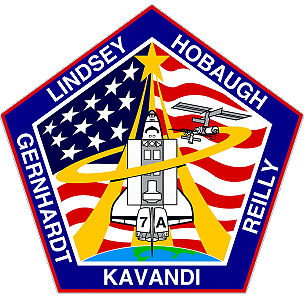 |
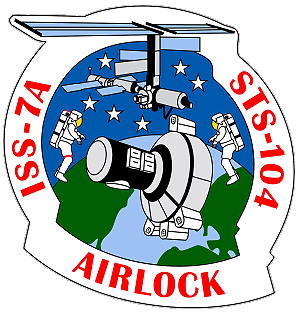 |
![]()
Launch, orbit and landing data
walkout photo |
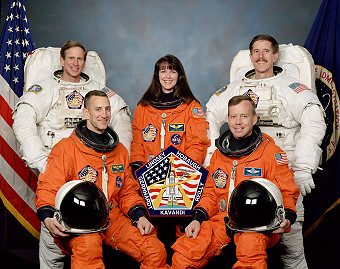 |
||||||||||||||||||||||||||||||||
alternative crew photo |
|||||||||||||||||||||||||||||||||
alternative crew photo |
Crew
| No. | Surname | Given names | Position | Flight No. | Duration | Orbits | |
| 1 | Lindsey | Steven Wayne | CDR | 3 | 12d 18h 34m 56s | 200 | |
| 2 | Hobaugh | Charles Owen "Scorch" | PLT, IV, backup-EV | 1 | 12d 18h 34m 56s | 200 | |
| 3 | Gernhardt | Michael Landon | MS-1 EV-1 | 4 | 12d 18h 34m 56s | 200 | |
| 4 | Kavandi | Janet Lynn | MS-2, PLC, RMS, FE | 3 | 12d 18h 34m 56s | 200 | |
| 5 | Reilly | James Francis II "J.R." | MS-3, EV-2 | 2 | 12d 18h 34m 56s | 200 |
Crew seating arrangement
|
 |
|
||||||||||||||||||||||||
Hardware
| Orbiter : | OV-104 (24.) |
| SSME (1 / 2 / 3): | 2056-2A (1.) / 2051-2A (2.) / 2047-2A (6.) |
| SRB: | BI-108 / RSRM 80 |
| ET: | ET-109 (SLWT-14) |
| OMS Pod: | Left Pod 03 (28.) / Right Pod 04 (24.) |
| FWD RCS Pod: | FRC 4 (24.) |
| RMS: | 202 (7.) |
| EMU (launch): | EMU No. 3013 (PLSS No. 1013) / EMU No. 3017 (PLSS No. 1017) / EMU No. 3003 (PLSS No. 1003) |
| EMU (landing): | EMU No. 3005 (PLSS No. 1005) / EMU No. 3011 (PLSS No. 1011) / EMU No. 3003 (PLSS No. 1003) |
Flight
|
Launch from Cape Canaveral (KSC) and
landing on Cape Canaveral (KSC), Runway 15. Atlantis used one new Block II Main Engine and two Block IIA Main Engines to complete its full complement of three engines. The Block II Main Engine configuration included a new Pratt & Whitney high-pressure fuel turbopump. The primary modification to the engine was elimination of welds by using a casting process for the housing, and an integral shaft/disk with thin-wall blades and ceramic bearings. This made the pump stronger and should increase the number of flights between major overhauls. Although the new pump added 300 pounds (135 kilograms) of weight to the shuttle, the results were a more reliable and safer engine because of increased pump robustness. Primary objectives of mission STS-104 (ISS-10-7A Joint Airlock) was to install the Quest Joint Airlock. The Joint Airlock is 20 ft (6.1 m) long, 13 ft (4.0 m) in diameter and weighs 6.5 short tons (5.9 metric tons). The Joint Airlock is a pressurized flight element consisting of two cylindrical chambers attached end-to-end by a connecting bulkhead and hatch. It should give the ISS resident crews the possibility to perform EVAs without using a Space Shuttle airlock. The airlock was a critical space station element because of design differences between American and Russian spacesuits. American suits did not fit through Russian-designed airlocks. During a series of integration tests, the Russian suits were connected to the airlock to assure that they worked together. The airlock was specially designed to accommodate both suits, providing a chamber where astronauts from every nation can suit up for spacewalks to conduct science experiments and perform maintenance outside the station. Atlantis' crew spent its first full day in space checking out equipment that were used for upcoming major activities - spacesuits and spacewalking gear; the shuttle's robotic arm; and the controls and tools used for the final rendezvous and docking with the station. The crew also powered up and prepared the shuttle's docking system and performed several engine firings to optimize the rate at which Atlantis closed in on the station. Atlantis' rendezvous and docking with the International Space Station began with the precisely timed launch of the shuttle on a course for the station. During the first two days of the mission, periodic engine firings gradually brought Atlantis to a point about 9 ½ statute miles (24.6 km) behind the station, the starting point for a final approach to the station. About 2 ½ hours before the scheduled docking time on Flight Day 3, Atlantis reached a point about 50,000 feet (15,240 meters) behind the ISS. At that time, Atlantis' jets were fired in a Terminal Intercept (TI) burn to begin the final phase of the rendezvous. Atlantis closed the final miles to the station during the next orbit. As Atlantis closed in, the shuttle's rendezvous radar system began tracking the station and providing range and closing rate information to the crew. During the approach toward the station, the shuttle had an opportunity to conduct four small mid-course corrections at regular intervals. Just after the fourth correction was completed, Atlantis reached a point about half a mile below the station. At that time, about an hour before the scheduled docking, Commander Steven Lindsey took over manual control of the approach. Steven Lindsey slowed Atlantis's approach and flew to a point about 600 feet (182.9 meters) directly below the station, from which he began a quarter-circle of the station, slowly moving to a position in front of the complex, in line with its direction of travel. Pilot Charles Hobaugh assisted Steven Lindsey in controlling Atlantis' approach. Mission Specialist James Reilly also played key roles in the rendezvous, assisting with the rendezvous navigation and operating a handheld laser ranging device. Mission Specialists Janet Kavandi and Michael Gernhardt operated the shuttle's docking mechanism to latch the station and Atlantis together after the two spacecraft made contact. Steven Lindsey flew the quarter-circle of the station, starting 600 feet (182.9 meters) below it, while slowly closing in on the complex, stopping at a point a little more than 300 feet (91.4 meters) directly in front of the station. From that point, he began slowly closing in on the station - moving at a speed of about a tenth of a mile per hour (0.16 kilometers per hour). Using a view from a camera mounted in the center of Atlantis' docking mechanism as a key alignment aid, Steven Lindsey precisely centered the docking ports of the two spacecraft. Steven Lindsey flew to a point where the docking mechanisms were 30 feet (9.14 meters) apart, and paused for about five minutes to check the alignment. For Atlantis' docking on July 14, 2001, Steven Lindsey maintained the shuttle's speed relative to the station at about one-tenth of a foot per second (3 centimeters per second), and kept the docking mechanisms aligned to within three inches (7.6 centimeters) of one another. When Atlantis made contact with the station, preliminary latches automatically attached the two spacecraft together. Immediately after Atlantis docked, the shuttle's steering jets were deactivated to reduce the forces acting at the docking interface. Shock absorber-type springs in the docking mechanism dampened any relative motion between the shuttle and the station. Once relative motion between the spacecraft had stopped, Janet Kavandi and Michael Gernhardt secured the docking mechanism, sending commands for Atlantis's mechanism to retract and close a final set of latches between the shuttle and station. The shuttle and station crews opened hatches and transferred some equipment and supplies, including water bags to the ISS Expedition 2. They then closed the hatches and Atlantis' cabin pressure was lowered to 10.2 pounds per square inch in preparation for the next day's spacewalk. The first EVA was performed by Michael Gernhardt and James Reilly on July 14, 2001 (5h 59m) to install Joint Airlock Module ("Quest") and attaching two high pressure oxygen tanks. During the first spacewalk the spacewalkers assisted as Susan Helms, using the station's robotic arm, lifted the new station airlock from Atlantis' payload bay and attached it to a port on the station's Unity connecting module. During much of the first spacewalk, James Reilly worked from a foot platform attached to the end of the shuttle's robotic arm, operated by Janet Kavandi. The first major task for the spacewalkers was for Michael Gernhardt to remove an insulating cover, nicknamed the "shower cap", from the airlock's Common Berthing Mechanism, the mechanism that will attach to Unity, while the airlock is in the payload bay. Michael Gernhardt also removed protective covers from the berthing mechanism's seals. The "shower cap" and seal covers were later stowed by the spacewalkers in a tool locker in Atlantis' payload bay for the trip back to Earth. Next, Michael Gernhardt disconnected a cable that provided shuttle electrical power to heaters on the airlock, called Launch To Activation or LTA heaters. Then James Reilly took the disconnected power cable and the removed airlock covers to a Tool Stowage Assembly (TSA) on the starboard side of the shuttle's payload bay to stow them. With the power cable between the shuttle and new airlock disconnected, Susan Helms began to latch the station's Canadarm2 onto a fixture on the new airlock. While Susan Helms and James Voss lifted the airlock from Atlantis' cargo bay and maneuvered it into position to attach to the Unity module, Michael Gernhardt and James Reilly had to wait inside the still-depressurized shuttle airlock, recharging their spacesuits by connecting to air and power from the shuttle. As Susan Helms worked with the station's arm, Janet Kavandi maneuvered the shuttle's arm into positions to provide television camera views to assist Susan Helms. Once the station airlock was poised high above the shuttle payload bay only a few feet from its attachment point on the station, Michael Gernhardt and James Reilly left the shuttle's airlock. The two spacewalkers provided on-the-spot observations for Susan Helms to assist with aligning the airlock as it was attached to Unity. Once the new airlock was attached to the station, Michael Gernhardt then connected a cable that will provide station power to the new component, the final major task for the spacewalk. After an overnight Airlock leak check, the next day's activities were largely devoted to airlock activation. Tasks included removing Common Berthing Mechanism motor controllers and connecting remaining utilities in the vestibule linking Unity with the airlock. Crewmembers entered the airlock to do more activation tasks, stow some equipment and check out the oxygen and nitrogen activities. The internal hatches between the shuttle and station were closed so Atlantis' cabin pressure could lowered in preparation for the second spacewalk. The second EVA was conducted by Michael Gernhardt and James Reilly on July 18, 2001 (6h 26m) to mount one oxygen and one nitrogen tank. The major objective of the second spacewalk was to attach and connect two - one oxygen and one nitrogen - of four oxygen and nitrogen tanks to the exterior of the new station airlock. The remaining two tanks were installed during the mission's third spacewalk. During the second spacewalk, Michael Gernhardt was tethered to the end of the shuttle's robotic arm for much of the work. Susan Helms was operating the station's arm to lift the tanks from the shuttle's payload bay and maneuvered them to the new airlock on the station. As the spacewalk began, Susan Helms latched the station arm onto the first tank, an oxygen tank, in Atlantis' payload bay. After the station arm was latched onto the tank, Michael Gernhardt released latches that hold it in place in the shuttle for launch. Susan Helms then lifted it from the shuttle bay and maneuvered it to the new station airlock. After releasing the latches, Michael Gernhardt got on the shuttle's robotic arm and Janet Kavandi flew him up to the station airlock. Meanwhile, James Reilly installed foot platforms and guideposts at the station airlock in preparation for installing the tank. When Susan Helms had moved the tank into position near the airlock, Michael Gernhardt and James Reilly, both working in foot platforms on the station's exterior, took the tank from the arm as Susan Helms released it. The spacewalkers then latched it into place on the airlock exterior, clamping it to some of the "towel bars" installed on the first spacewalk and using guideposts installed by James Reilly to ensure that the tank is properly aligned. Michael Gernhardt then connected hoses from the tank to the airlock. The same tasks were basically repeated to lift the second tank, a nitrogen tank, from the shuttle's cargo bay and install it onto the station airlock, although some foot platforms had to be repositioned. Then, while James Reilly finished connections for the second tank, Michael Gernhardt installed insulating covers on several airlock fixtures, including the four pins that helped latch the airlock in place during its time in the shuttle bay and the grapple fixture held by the station's robotic arm to attach the airlock to the station. The next day some equipment and supplies was transferred, including the Protein Crystal Growth - Enhanced GN2 Nitrogen Deware experiment. The third and final EVA (using first time the new airlock Quest) was again performed by Michael Gernhardt and James Reilly on July 20, 2001 (4h 01m) to attach the final nitrogen tank. The primary objective of the third spacewalk was to install the final two tanks - one oxygen and one nitrogen - on the exterior of the new station airlock. The task was basically a mirror of the procedures used during the second spacewalk to remove the first two tanks from the shuttle's payload bay and install them on the airlock exterior. In addition to installing the final two tanks, the spacewalkers connected a cable to the airlock that will enable communications with Russian spacesuits during future station spacewalks. They also installed several handholds on the airlock exterior and installed insulating covers over grapple fixtures on the newly installed air tanks. Once Atlantis was ready to undock, Janet Kavandi and Michael Gernhardt sent a command that released the docking mechanism. The initial separation of the spacecraft was performed by springs in the docking mechanism that gently pushed the shuttle away from the station. Atlantis's steering jets were shut off to avoid any inadvertent firings during this initial separation. Once the docking mechanism's springs had pushed Atlantis away to a distance of about two feet (61 centimeters), when the docking devices were clear of one another, Charles Hobaugh turned the steering jets back on and fired them to begin very slowly moving away. From the aft flight deck, Charles Hobaugh manually controlled Atlantis within a tight corridor as he separated from the ISS, essentially the reverse of the task performed by Steven Lindsey when Atlantis docked. Atlantis continued away to a distance of about 450 feet (137.2 meters), where Charles Hobaugh began a close flyaround of the station, circling the complex almost one and a quarter time. Charles Hobaugh passed a point directly above the station, then behind, then underneath, then in front and then reached a point directly above the station for a second time. At that point, passing above the station for a second time, Charles Hobaugh fired Atlantis's jets for final separation from the station. |
EVA data
| Name | Start | End | Duration | Mission | Airlock | Suit | |
| EVA | Gernhardt, Michael | 15.07.2001, 03:10 UTC | 15.07.2001, 09:09 UTC | 5h 59m | STS-104 | Atlantis - ISS | EMU No. 3013 |
| EVA | Reilly, James | 15.07.2001, 03:10 UTC | 15.07.2001, 09:09 UTC | 5h 59m | STS-104 | Atlantis - ISS | EMU No. 3017 |
| EVA | Gernhardt, Michael | 18.07.2001, 03:0? UTC | 18.07.2001, 09:3? UTC | 6h 26m | STS-104 | Atlantis - ISS | EMU No. 3013 |
| EVA | Reilly, James | 18.07.2001, 03:0? UTC | 18.07.2001, 09:3? UTC | 6h 26m | STS-104 | Atlantis - ISS | EMU No. 3017 |
| EVA | Gernhardt, Michael | 21.07.2001, 04:3? UTC | 21.07.2001, 08:3? UTC | 4h 01m | STS-104 | ISS - Quest | EMU No. 3013 |
| EVA | Reilly, James | 21.07.2001, 04:3? UTC | 21.07.2001, 08:3? UTC | 4h 01m | STS-104 | ISS - Quest | EMU No. 3017 |
Photos / Graphics
 |
 |
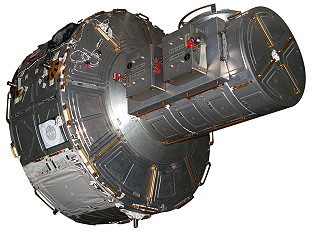 |
 |
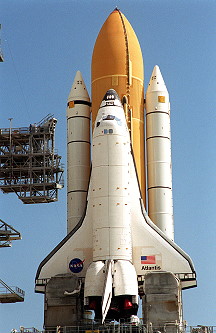 |
 |
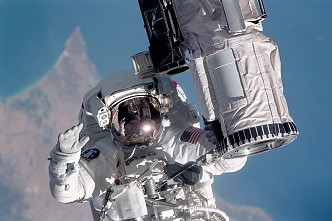 |
 |
 |
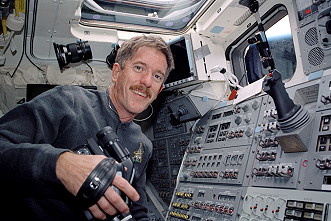 |
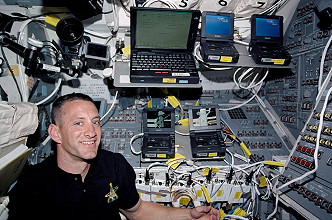 |
 |
 |
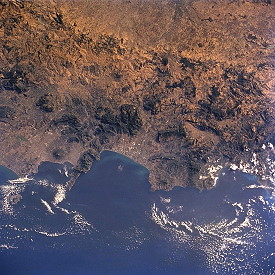 |
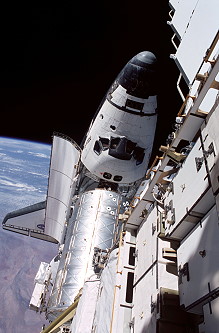 |
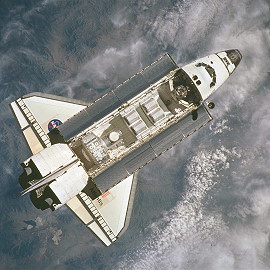 |
 |
|
more EVA photos |
|
| © |  |
Last update on March 27, 2020.  |
 |